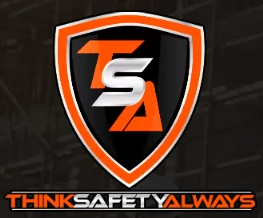Overhead cranes, including gantry cranes, are essential in many manufacturing, maintenance and industrial work environments when efficiency is required for lifting and moving heavy loads.

Overhead cranes, including gantry cranes, are essential in many manufacturing, maintenance and industrial work environments when efficiency is required for lifting and moving heavy loads.
Crane operators, riggers and employees that work near overhead cranes need to be aware of the unique hazards of these large machines. Caught-in/Between, Struck-by/Against, Crane Overloading and Falling Materials are the most common industrial overhead crane hazards.
OSHA General Industry Standard 1910 Subpart N covers Materials Handling and Storage – Overhead and Gantry Cranes. To ensure everyone stays safe when cranes are in operation, only trained and authorized workers should be allowed to operate any overhead crane.
Employees who work in the vicinity of the overhead crane must be trained in workplace general safety awareness to ensure all safety precautions are taken during the course of the work day to keep all workers safe.
OSHA General Industry Standard 1910.179(b)(8) Only designated personnel shall be permitted to operate a crane covered by this section.
Perform a basic crane inspection at the beginning of every shift or before using the crane for the first time each work day. At minimum, look for the following:
If any defects or issues are found during any inspection do not operate the crane and report immediately. A crane inspection process should be implemented to document a more comprehensive periodic check of all cranes with written records maintained.
All crane operators, riggers and employees who work in the area where overhead cranes are in operation must wear the appropriate PPE, such as hard hats, safety glasses, work gloves and hard-toe boots.
The hoist operator and rigger should be trained in common crane operation hand signals, especially if there could ever be a situation when voice communications cannot be heard.
It is important that crane operators and riggers know the load rate. Load markings should be posted on the crane and hoist block. Before the lift, verify that the load is not heavier than the maximum load capacity.
About Us
Work Safety is a set of measures to be implemented in the workplace as quality assurance and safety of employees. The main objective is to maintain the physical and psychological integrity of staff and combat risks and occupational accidents.
It encompasses a set of measures aimed at reducing accidents and occupational diseases, thus protecting the employee’s physical integrity, skills, and the institution as a whole.
Investing in job security means that your company is in compliance with the standards established by OSHA for the safety of employees, while staying attentive to the quality of the relationship within the company. Think Safety Always is dedicated to providing the most comprehensive training available nationwide.
Our Mission & Core Values
© 2025 coursetakers.com All Rights Reserved. Terms and Conditions of use | Privacy Policy